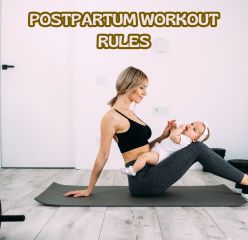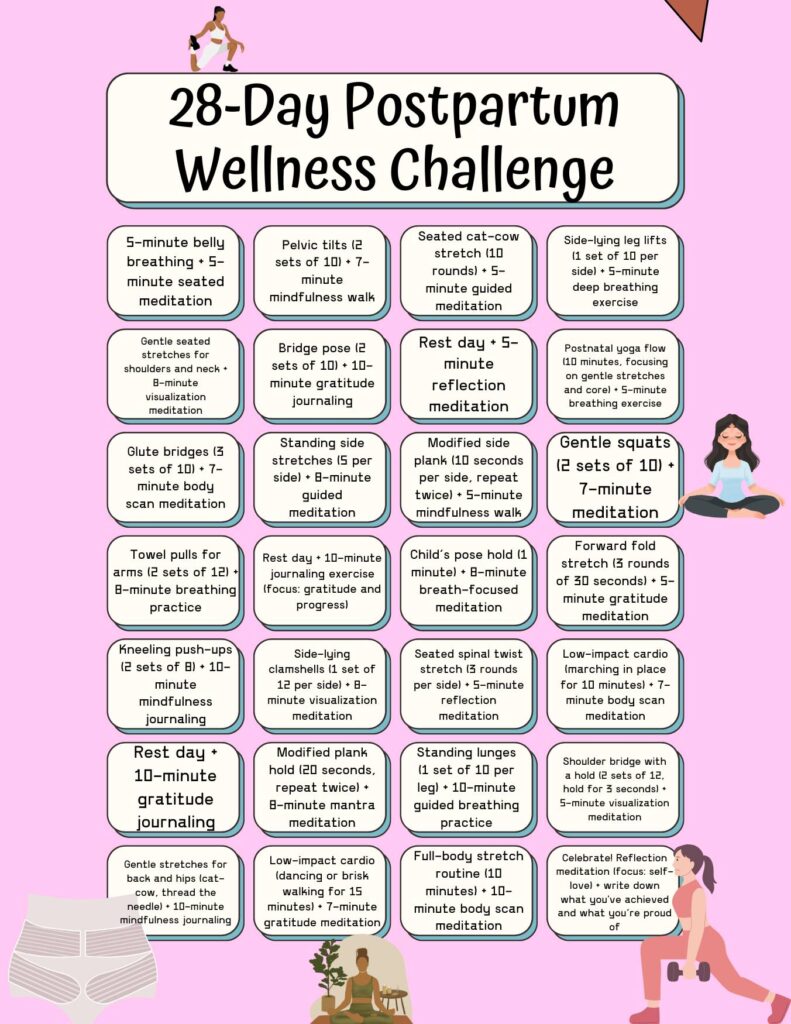Do you feel ready to begin your postpartum workout? Be careful. You shouldn’t start sooner than you’re ready to. So then, how soon could you start a postpartum workout challenge if you wanted to?
In this article, let’s go through some of the questions that moms have about postnatal workouts. How soon can you start? Does it depend on what type of birth you had?
Let’s get into it.
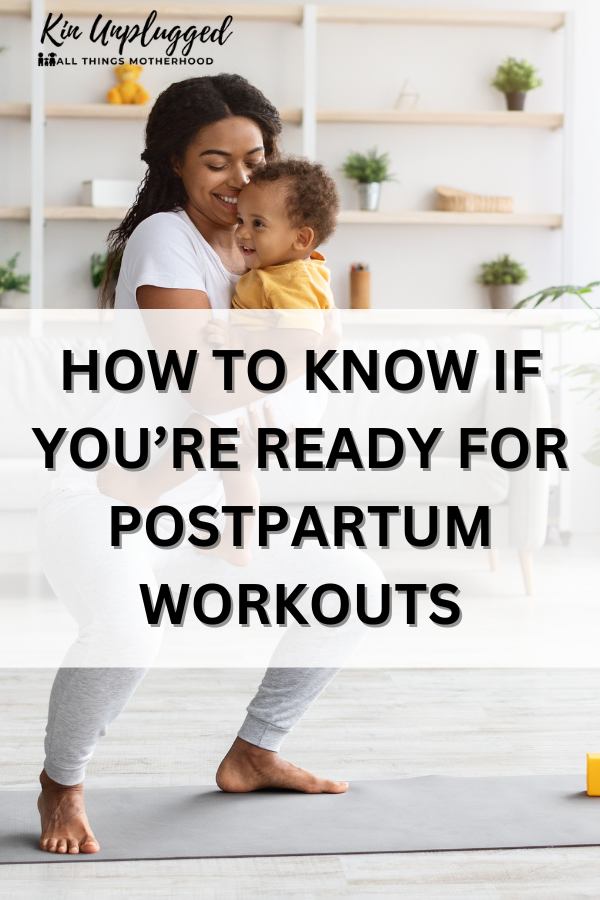
How soon after giving birth can you workout?
You can typically start light workouts, like gentle walking or stretching, within a few days to a week after giving birth if you had an uncomplicated vaginal delivery and feel ready.
However, for more intense exercises, most doctors recommend waiting about 6 weeks postpartum or until you’ve had your postpartum check-up to ensure your body is healing well. If you had a C-section or complications, you might need more time, so always check with your healthcare provider first.
When you’re ready to ease back into fitness, consider joining a postpartum workout challenge tailored to new moms. These programs often include gentle, restorative exercises that build strength and support healing while respecting your postpartum journey.
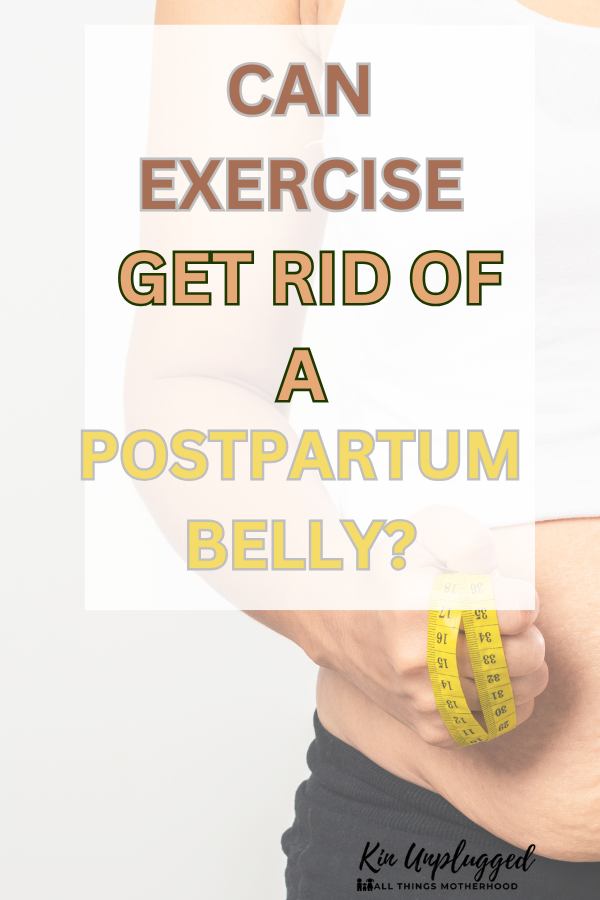
When to start exercise after normal delivery with stitches
Starting exercise after a normal delivery with stitches requires careful consideration to ensure proper healing and recovery. Generally, you should wait 4 to 6 weeks before beginning any structured physical activity, but this can vary depending on your individual recovery and your healthcare provider’s advice. Your stitches, whether for a perineal tear or an episiotomy, need time to heal completely to avoid complications like pain, infection, or reopening of the wound.
Early recovery focus (the first 4-6 weeks)
While you’re waiting for the green light for a postnatal workout, you can focus on gentle activities that promote circulation and healing:
- Walking. Short, slow walks around your home or outdoors are a great way to get moving without straining your body.
- Pelvic floor exercises (Kegels). These can often be started a few days postpartum to strengthen your pelvic muscles and promote healing in the perineal area.
- Deep core breathing. Helps engage your core and improves overall muscle recovery without putting pressure on healing tissues.
Why is it hard to lose weight after pregnancy?
Losing weight after pregnancy can be challenging due to several factors. Hormonal changes, like higher levels of prolactin for breastfeeding, can affect metabolism and fat storage. Sleep deprivation, stress and the demands of caring for a newborn often make it harder to find time and energy for healthy eating and exercise. Also, your body is still recovering from pregnancy and childbirth, so weight loss may not happen as quickly as you’d like.
To tackle these challenges, adopting a postpartum exercise plan that aligns with your energy levels and physical recovery can help. Pairing gentle, consistent workouts with balanced nutrition and plenty of patience will support gradual, sustainable weight loss while prioritizing your overall well-being.
READ: Get rid of your apron belly without surgery
Can exercise get rid of a postpartum belly?
Yes, exercise can help reduce a postpartum belly by strengthening abdominal muscles and burning excess fat. However, it’s important to approach this gradually and include core-specific exercises like pelvic tilts, bridges and gentle abdominal work after your body has sufficiently healed. Combining this with overall body workouts and a healthy diet can support progress.
That said, factors like hormonal shifts, diastasis recti (ab separation) and the natural recovery process may affect how quickly results are visible. Be patient with your body and focus on overall wellness. Regular exercise can also boost mood and energy, helping to manage postpartum depression while you work toward your fitness goals.
What is the recommended exercise for postpartum?
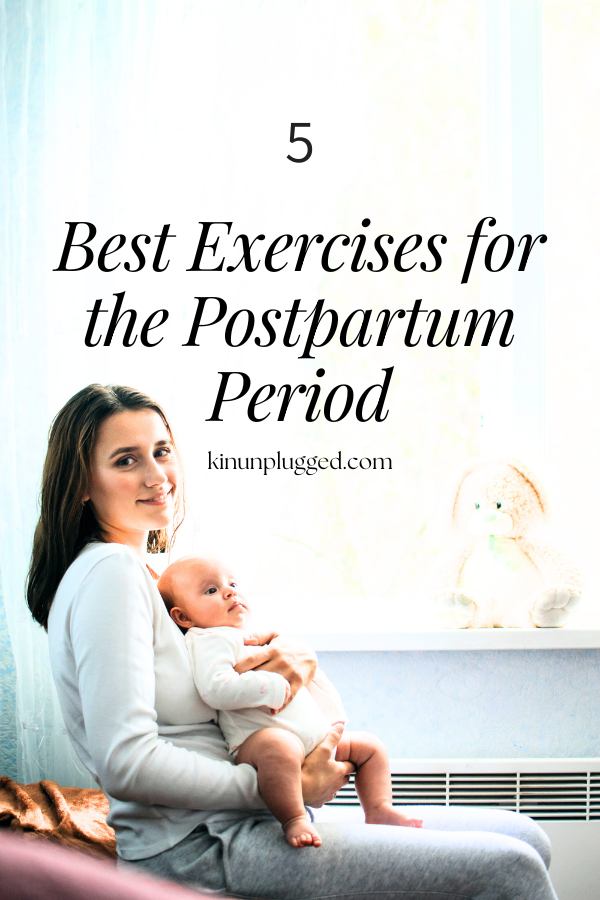
The recommended postpartum exercises focus on gentle, progressive activities that respect your body’s healing process while helping rebuild strength and energy. The journey back to fitness after giving birth should begin with low-impact movements and gradually include more challenging exercises as your body recovers.
1. Gentle core activation
Start with deep breathing and pelvic floor exercises (like Kegels) to reconnect with your core and support your pelvic muscles. These exercises are foundational and prepare your body for more movement.
2. Walking
Walking is a simple, low-impact way to ease into a fitness routine. It gets your blood flowing, supports cardiovascular health and can be done with your baby in a stroller for added bonding time.
3. Postnatal Yoga or Pilates
These are fantastic options to gently stretch and strengthen your muscles while promoting relaxation and mindfulness. Yoga and Pilates also help with posture, which is often affected during pregnancy and postpartum.
4. Strength training
After about six to eight weeks (or when cleared by your doctor), light strength training with resistance bands or bodyweight exercises like squats, lunges and modified push-ups can help rebuild muscle tone.
5. Low-impact cardio
Activities like swimming or cycling are great options for improving endurance and boosting energy without straining your joints.
If you’re ready to embrace a structured approach, why not start with my FREE 28-day Postpartum Workout Challenge? It’s designed with your recovery in mind, offering daily exercises that gradually increase in intensity, paired with wellness tips to keep you feeling your best. You can download and print it for easy use at home. Perfect for busy new moms!
READ: The 5-5-5 Rule for Postpartum
What is the best exercise for postpartum?
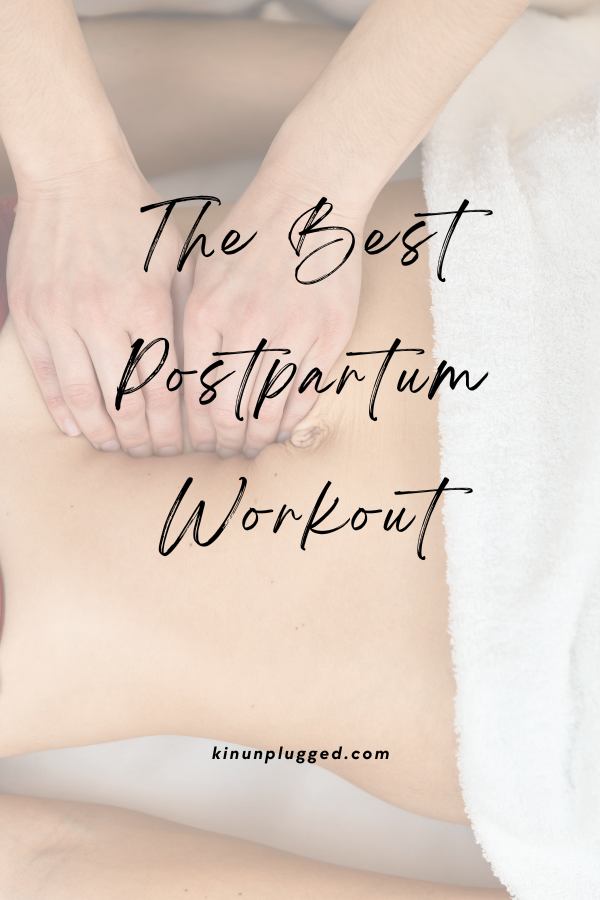
The absolute best exercise for postpartum recovery is deep core breathing.
This exercise specifically targets your transverse abdominis, the deepest layer of your abdominal muscles, which acts as a natural corset to support your back, pelvis and core. During pregnancy, these muscles stretch significantly, often leading to diastasis recti (abdominal separation) or general weakness. Deep core breathing helps reconnect these muscles, rebuilds strength and improves posture without putting undue strain on your healing body.
The beauty of deep core breathing is that it’s safe to start soon after giving birth (with your doctor’s approval) and lays the foundation for more advanced movements as you progress. It’s also incredibly versatile. You can do it while nursing, lying down or even holding your baby.
By retraining your core from the inside out, you’re not only enhancing your physical recovery but also preventing common postpartum issues like back pain and poor bladder control.
If you’re looking for a structured way to ease into postpartum fitness, my free 28-day postpartum workout challenge incorporates deep core breathing and other gentle exercises designed to support your recovery.
Don’t miss this chance to take intentional steps toward feeling like yourself again!
I hope this has been useful for you as you begin to plan your journey back to yourself in this postpartum period.
Also, CHECK OUT:Self-Discovery Bundle for Moms

